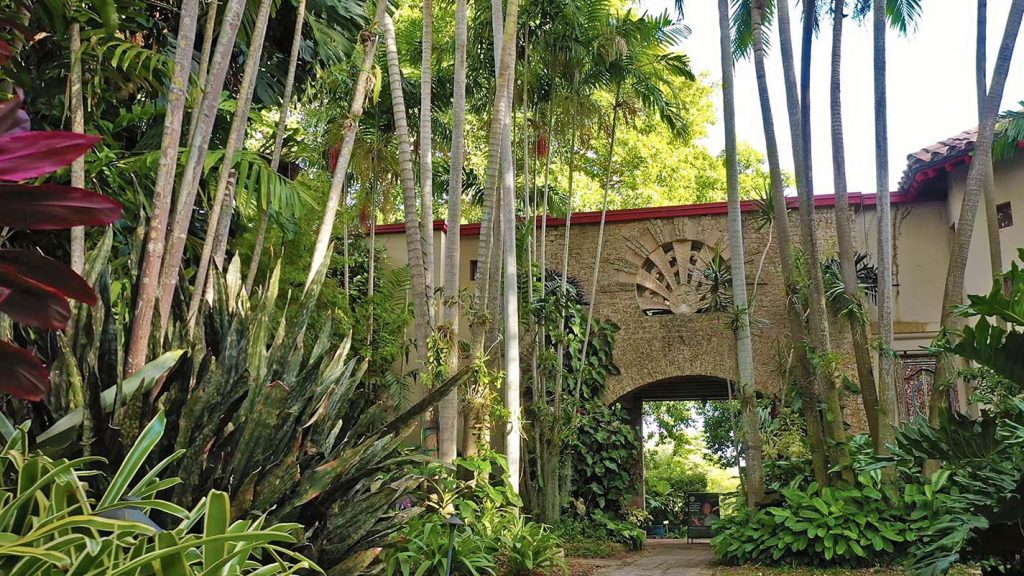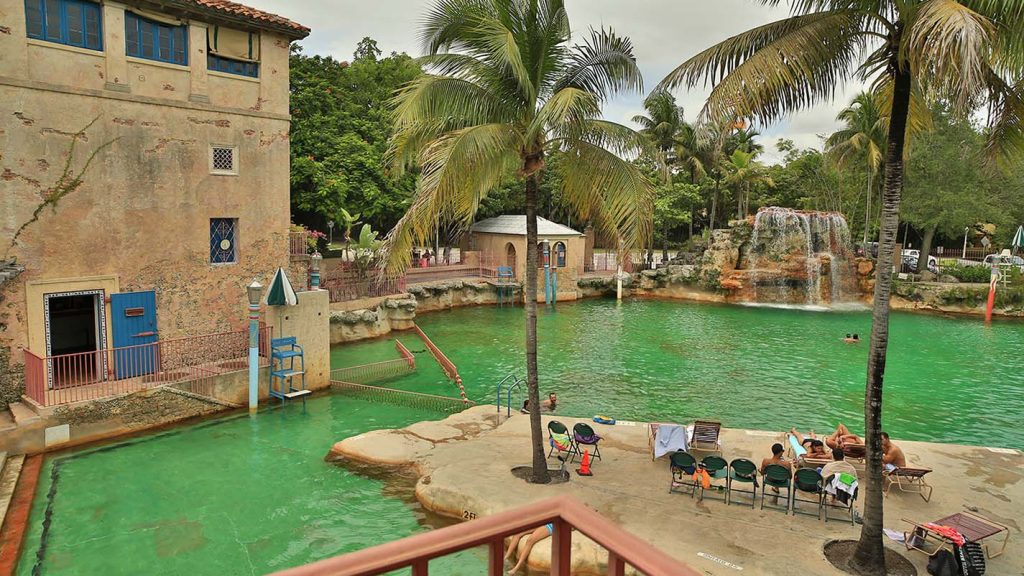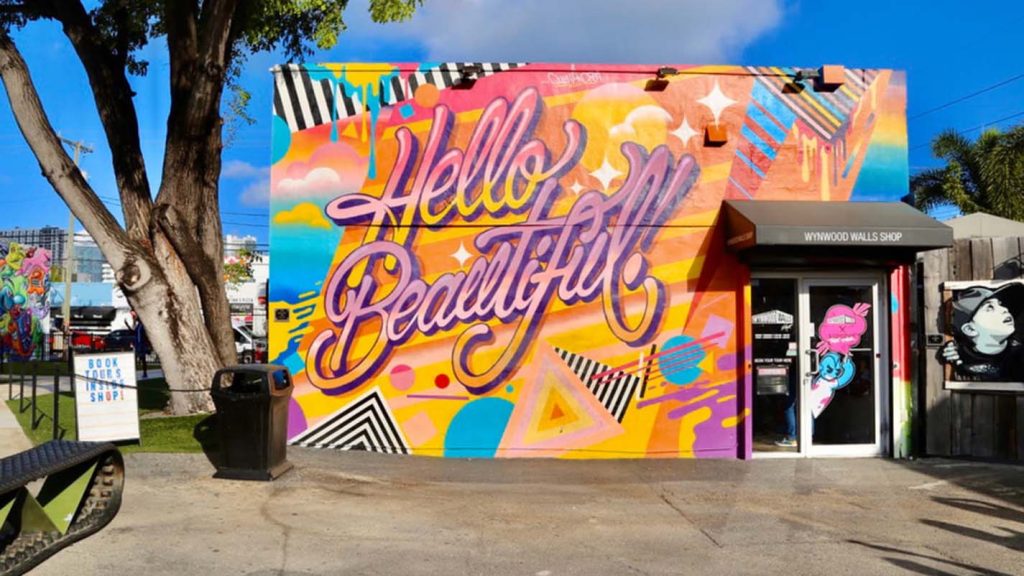When people think of Miami, images of sun-soaked beaches, vibrant nightlife, and the iconic Art Deco architecture of South Beach often come to mind. While these are undoubtedly some of the city’s most popular attractions, Miami has so much more to offer beyond the well-trodden tourist paths. During my recent trip, I decided to dig deeper and explore some of the lesser-known gems that make Miami truly unique.
1. The Kampong: A Botanical Paradise
Location: 4013 Douglas Road, Coconut Grove, Miami, FL 33133
Getting There: The Kampong is nestled in the Coconut Grove neighborhood, a short drive from downtown Miami. If you’re relying on public transport, the Metrorail’s Douglas Road Station is the closest stop, followed by a brief Uber or Lyft ride.

Tucked away in the historic Coconut Grove, The Kampong is part of the National Tropical Botanical Garden and offers a serene escape from the city’s bustling pace. This 9-acre botanical garden was once the private home of Dr. David Fairchild, a renowned botanist who introduced many exotic plants to the United States. The Kampong is a lush, tranquil oasis that feels worlds away from the urban sprawl of Miami, yet it’s only a short distance from the city center.
Walking through The Kampong felt like stepping into another world. As I wandered among the diverse collection of tropical fruit trees, palms, and flowering plants, I couldn’t help but marvel at the sheer beauty and diversity of the flora. The guided tour I took was incredibly informative, with the guide sharing fascinating stories about Dr. Fairchild’s adventures and the origins of the plants. The highlight for me was seeing the massive baobab tree, which is over 80 years old. The Kampong also offers stunning views of Biscayne Bay, making it a perfect spot for photography enthusiasts.
Tips:
- Book in Advance: The Kampong requires advance reservations, so be sure to book your visit ahead of time.
- Best Time to Visit: Early morning or late afternoon visits are ideal, as the garden is quieter and the light is perfect for photos.
- Bring Water: Miami’s heat can be intense, even in the shaded garden, so bring water and wear comfortable walking shoes.
2. Venetian Pool: A Hidden Gem for a Refreshing Dip
Location: 2701 De Soto Boulevard, Coral Gables, FL 33134
Getting There: Venetian Pool is located in Coral Gables, a picturesque neighborhood just southwest of downtown Miami. It’s easily accessible by car, and there’s ample parking nearby. Public transportation options include the Coral Gables Trolley, which stops close to the pool.

Venetian Pool is a historic public swimming pool carved out of a coral rock quarry in 1924. It’s unlike any other pool you’ll find in Miami, with its Mediterranean-style architecture, cascading waterfalls, and grottos. The pool is filled with fresh spring water and is drained and refilled daily during the busy season, ensuring crystal-clear water for visitors.
I visited Venetian Pool on a particularly hot day, and it was the perfect way to cool off. The pool is expansive, and with its rock formations and waterfalls, it feels more like a natural lagoon than a man-made swimming hole. I spent hours floating in the cool, refreshing water and exploring the hidden grottoes, which added a sense of adventure to the experience. The lush landscaping and historic charm of the place made it feel like I had stumbled upon a secret oasis in the middle of the city.
Tips:
- Go Early: The pool can get crowded, especially on weekends, so arrive early to secure a spot.
- Age Restrictions: Children under 3 are not allowed in the pool, so plan accordingly if you’re traveling with little ones.
- Amenities: There are changing rooms and a café on-site, so you can easily spend a full day here.
3. Little Havana’s Calle Ocho Walk of Fame: A Stroll Through Cuban Culture
Location: SW 8th Street (Calle Ocho) between 12th and 17th Avenues, Little Havana, Miami, FL
Getting There: Little Havana is one of Miami’s most vibrant neighborhoods, and it’s easily accessible by car or bus. The Miami Trolley’s Little Havana route is also a convenient option.
Calle Ocho is the heart of Little Havana, a neighborhood that’s bursting with Cuban culture, music, and flavor. While most tourists flock to the famous Versailles restaurant or the Domino Park, few take the time to explore the Calle Ocho Walk of Fame. This stretch of sidewalk honors Cuban and Latin American celebrities with star plaques, much like the Hollywood Walk of Fame.
Strolling along Calle Ocho, I was immersed in the sights, sounds, and smells of Cuban culture. The Walk of Fame features stars honoring icons like Gloria Estefan and Celia Cruz, but what really made the experience special was the vibrant atmosphere of the neighborhood itself. Live music spilled out of cafes, the aroma of fresh Cuban coffee filled the air, and colorful murals adorned the walls. I stopped at a local café to try a cortadito (a small Cuban espresso with milk), which was strong and delicious.
Tips:
- Explore Beyond the Stars: While the Walk of Fame is a highlight, don’t miss the other attractions in Little Havana, like the Maximo Gomez Park (Domino Park) and the local cigar shops.
- Visit During Viernes Culturales: If possible, visit on the last Friday of the month when the neighborhood hosts Viernes Culturales, an evening of live music, art, and street performances.
- Stay Safe: Like any urban area, it’s best to stay aware of your surroundings, especially after dark.
4. Deering Estate: A Step Back in Time
Location: 16701 SW 72nd Avenue, Miami, FL 33157
Getting There: Deering Estate is located in the southern part of Miami, in the Palmetto Bay area. It’s a bit farther from the city center, so driving is the most convenient way to get there.
The Deering Estate is a 444-acre environmental, archaeological, and historic preserve that offers a glimpse into Miami’s past. It was once the home of Charles Deering, an industrialist and philanthropist, and it’s now a hub for cultural events, art exhibits, and nature tours. The estate includes historic buildings, native habitats, and archaeological sites that date back thousands of years.
Visiting the Deering Estate felt like a journey back in time. The estate’s main house is a beautiful example of early 20th-century architecture, and the surrounding grounds are stunning. I took a guided tour of the house, learning about Charles Deering’s life and his contributions to the arts and environmental conservation. Afterward, I explored the estate’s natural areas, including the mangrove forests and coastal wetlands. The estate also offers kayak rentals, and I took advantage of this to paddle along the Biscayne Bay shoreline, where I spotted manatees and a variety of bird species.
Tips:
- Check the Event Calendar: The Deering Estate hosts numerous events throughout the year, including moonlight kayaking, art exhibitions, and historical reenactments. Check their calendar to time your visit with something special.
- Wear Comfortable Shoes: The estate is large, and there’s a lot of ground to cover, so comfortable shoes are a must.
- Pack a Picnic: The estate has several picturesque spots perfect for a picnic, so consider bringing lunch to enjoy by the water.
5. Wynwood Walls: A Canvas of Color and Creativity
Location: 2520 NW 2nd Avenue, Miami, FL 33127
Getting There: Wynwood is one of Miami’s trendiest neighborhoods, located just north of downtown. It’s easily accessible by car, and there’s ample street parking and several paid lots nearby.

Wynwood Walls is an outdoor museum dedicated to street art and graffiti, featuring massive murals by some of the world’s most renowned artists. What started as a project to revitalize the warehouse district has become a global destination for art lovers. The neighborhood surrounding Wynwood Walls is also packed with galleries, cafes, and shops, making it a great place to spend an afternoon.
The moment I entered Wynwood Walls, I was struck by the explosion of color and creativity. Each mural was a masterpiece in its own right, with styles ranging from hyper-realistic portraits to abstract designs. I spent hours wandering the open-air gallery, snapping photos and marveling at the talent on display. The surrounding neighborhood was just as vibrant, with art spilling onto every available surface, including sidewalks, lampposts, and storefronts. I also popped into a few of the nearby galleries and found some unique pieces by local artists.
Tips:
- Visit Early or Late: Wynwood Walls can get crowded, especially on weekends, so visiting early in the morning or later in the evening is ideal for a more relaxed experience.
- Bring Your Camera: Wynwood Walls is incredibly photogenic, so don’t forget your camera or smartphone to capture the stunning murals.
- Explore the Neighborhood: There’s more to Wynwood than just the Walls—take the time to explore the local galleries, boutiques, and coffee shops.
6. The Ancient Spanish Monastery: A Tranquil Retreat
Location: 16711 West Dixie Highway, North Miami Beach, FL 33160
Getting There: The Ancient Spanish Monastery is located in North Miami Beach, a short drive from the city center. It’s best accessed by car, with parking available on-site.
The Ancient Spanish Monastery, officially known as the Monastery of St. Bernard de Clairvaux, is one of the oldest buildings in the Western Hemisphere. Originally built in Spain in the 12th century, it was dismantled, shipped to the U.S., and reassembled in Miami in the 1950s. Today, it serves as a church and tourist attraction, offering a peaceful escape from the city’s hustle and bustle.
Visiting the Ancient Spanish Monastery was a deeply serene experience. The monastery’s cloisters and gardens are beautifully maintained, providing a tranquil setting that feels far removed from the urban environment of Miami. The Romanesque architecture, with its stone arches and intricate carvings, transported me back in time. I spent a quiet afternoon wandering the grounds, reflecting in the peaceful atmosphere, and learning about the monastery’s fascinating history. It’s hard to believe such an ancient structure exists in the heart of modern Miami.
Tips:
- Check for Events: The monastery hosts various events, including concerts and weddings, which may restrict access to certain areas. Check their schedule before visiting.
- Guided Tours: If you’re interested in the history of the monastery, consider taking a guided tour to get more in-depth information.
- Quiet Reflection: This is a place of peace and reflection, so be mindful of the tranquil environment during your visit.
Miami is a city that’s bursting with life and energy, but it’s also a place where you can find hidden corners of tranquility, history, and culture. From the botanical beauty of The Kampong to the artistic vibrancy of Wynwood Walls, these lesser-known attractions offer a different perspective on the Magic City. They provide an opportunity to escape the crowds and experience Miami in a way that’s both enriching and memorable. Whether you’re a first-time visitor or a seasoned traveler, I highly recommend venturing beyond the typical tourist spots and discovering the unique experiences that await you in Miami’s hidden gems.